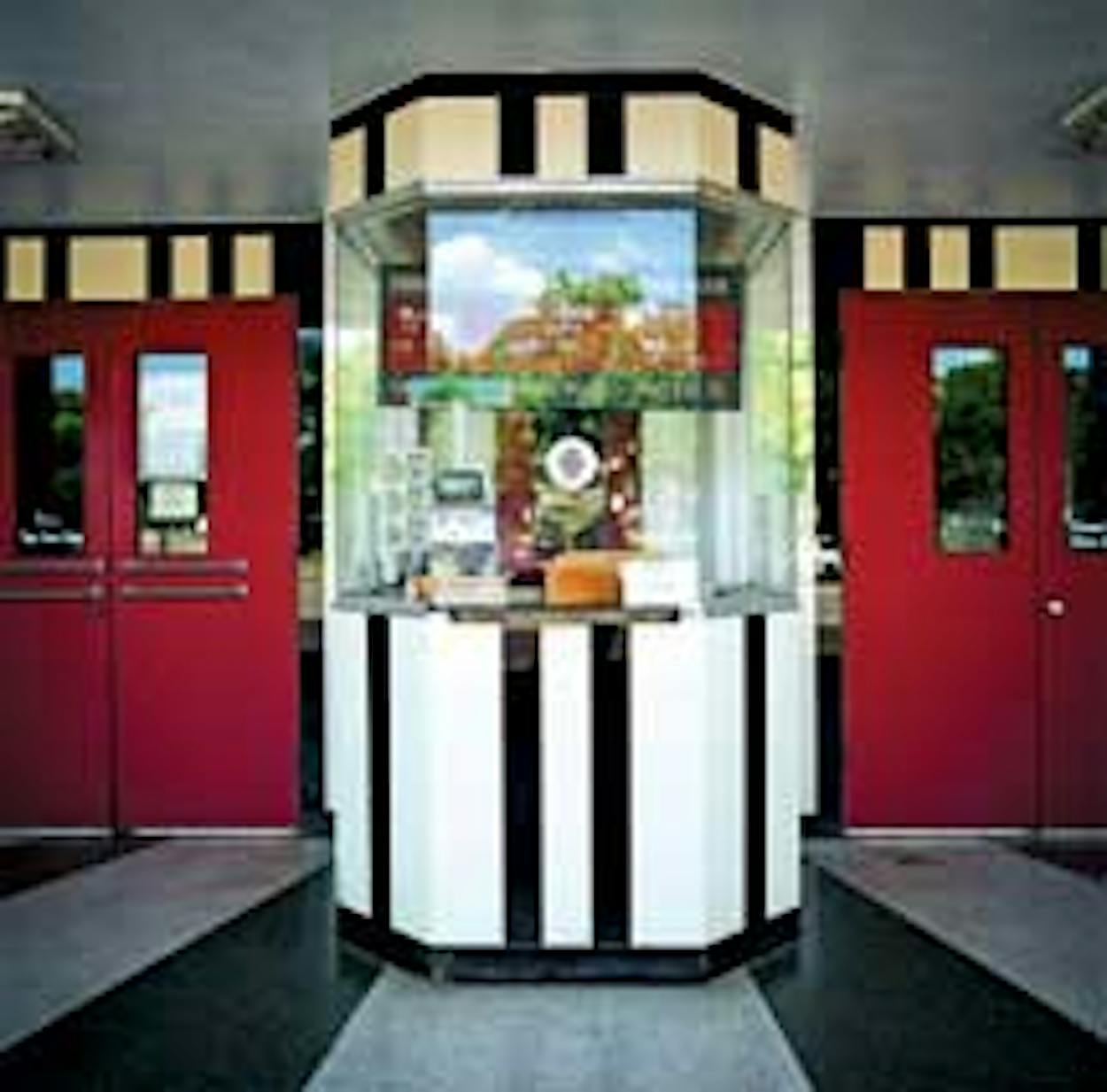Tell people you’re going to Graham and most ask, “Where?” Those who know that the town is 88 miles northwest of Fort Worth ask, “Why?”
The answer, more epic than you might imagine, begins pleasantly enough with high-caliber scenery. Forget your flat misconceptions of north-central Texas. Instead, picture geo-drama that even Bandera would envy. Wedged in the fork of two creeks, Graham (population: 8,691) sits among a bundle of rocky knobs, grassy plateaus, and boulder-strewn cliffs. For a lordly overview of this rambunctious terrain, huff your way up a stony path flanked by irises gone wild in Victory Park, smack-dab in the middle of town. From the summit of Standpipe Mountain, you’ll have a view of one of Graham’s other easy attributes: “America’s largest downtown square.” Whether this superlative is an official fact or a booster fantasy, the square is expansive, stretched two blocks long and a fat block wide, with room aplenty for the Young County courthouse, an ode to art deco completed in 1932 and adorned with limestone carvings of wagon trains, cattlemen, Indians, a pair of fearsome eagles, and the cutest buffalo faces this side of Pixar.
Mature pecan and magnolia trees pepper the square, yet there’s still space for a gazebo and veterans’ memorials; a sandstone archway left over from the original 1884 courthouse; and the Old Post Office Museum and Art Center, home to an airy gallery and a compact exhibit on local history. Oil Fields of Graham, a mural by Alexandre Hogue, one of many artists commissioned during the Depression to create public art for post offices, still graces the foyer.
Storefronts, some more than a century old, dispense necessities (like auto parts) and fripperies (like rhinestone belt buckles). Nestled in the back of Mark’s Gallery, an antiques-mall-cum-flower-shop, is the Magnolia Tea Room, where salads and quiche have ruled for more than a dozen years, quite a feat considering the meat-and-potato monopoly hereabouts. After a dainty lunch, I was primed for another girlie indulgence—a matinee (Sex and the City, no less) at the National Theatre, which was originally built in 1919.
Yet, like any memorable epic, there’s more to Graham than sweetness and light. A few miles northwest of town at Fort Belknap, one in a string of frontier forts that stretched from the Red River to the Rio Grande, the precise stone buildings and pastoral grounds—which include an astonishing grape arbor with vines too thick to hug—belie the buckets of blood spilled in these hills by Indians and settlers alike. Historical markers at the fort and around town allude to a volatile past with enough abductions, escaped outlaws (some who sawed off the ankles of the dead men they were shackled to), scalpings, and revenge killings to give Cormac McCarthy pause.
But you can take your dose of Graham’s gritty history with a shot of luxury and fun at the Wildcatter Ranch, just southeast of town. This 1,500-acre resort, perched on a plateau with a stunning view of the Brazos River valley, offers a slew of cowboy-lite activities, from trail rides to skeet shooting, as well as archery, canoeing, biking, hiking, every sport involving a ball you can imagine, and swimming in a vanishing-edge pool on a bluff you really could vanish off of. (And don’t forget the food. The ranch’s steakhouse made Texas Monthly’s December 2007 list as one of the best in the state.)
For the most part, the rowdy past is tucked away in the guest rooms. All sixteen—with sixteen more scheduled to open this month—are adorned with Western decor (think hides and big-boned furniture), but each is themed around a local case history, from something as relatively benign as Graham’s oil boom of the twenties to, in the case of my room, something as horrific as the Elm Creek Raid of 1864, a convoluted tale involving an attack by Kiowa and Comanche, the death of a number of settlers and soldiers, the kidnapping of African American pioneer Britt Johnson’s family, his dogged and successful quest to retrieve them, and his subsequent murder and mutilation by the Kiowa several years later (sweet dreams!). As I slipped into my cushy bed that night, facing nothing more frightening than the Weather Channel, I decided that, if nothing else, a trip to Graham drives home the point that there’s no time like the present.
Old Post Office Museum and Art Center
Open Tue–Fri 10–4. Closed Sun, Mon, & Sat. 510 Third, 940-549-1470 or opomac.org.
Magnolia Tea Room
Open Tue–Sat 11–2:30. Closed Sun & Mon. 523 Fourth, 940-549-8000.
National Theatre
522 Oak, 940-549-2077.
Fort Belknap
Open Mon, Tue, & Thur–Sat 9–noon and 1:30–5, Sun 1:30–5. Closed Wed. Twelve miles northwest of town on Texas Highway 251 (a more scenic route is along U.S. 380), 940-846-3222.
Wildcatter Ranch
From $189 a night. Seven miles southeast of Graham on Texas Highway 16, 940-549-3500 or wildcatterranch.com.
WHILE YOU’RE IN THE NEIGHBORHOOD
A night at the Wildcatter Ranch isn’t cheap. By comparison, a night at the rambling three-bedroom farmhouse at Hockaday Ranch is. You still enjoy grand views of the Brazos River, along with a thousand acres all to yourself—except for a donkey, a herd of belligerently friendly horses, cows, livestock guard dogs, farm cats, and birds galore. From $100 a night. Four miles southeast of Graham on Texas Highway 16, 940-550-8041 or hockadayranch.com.







